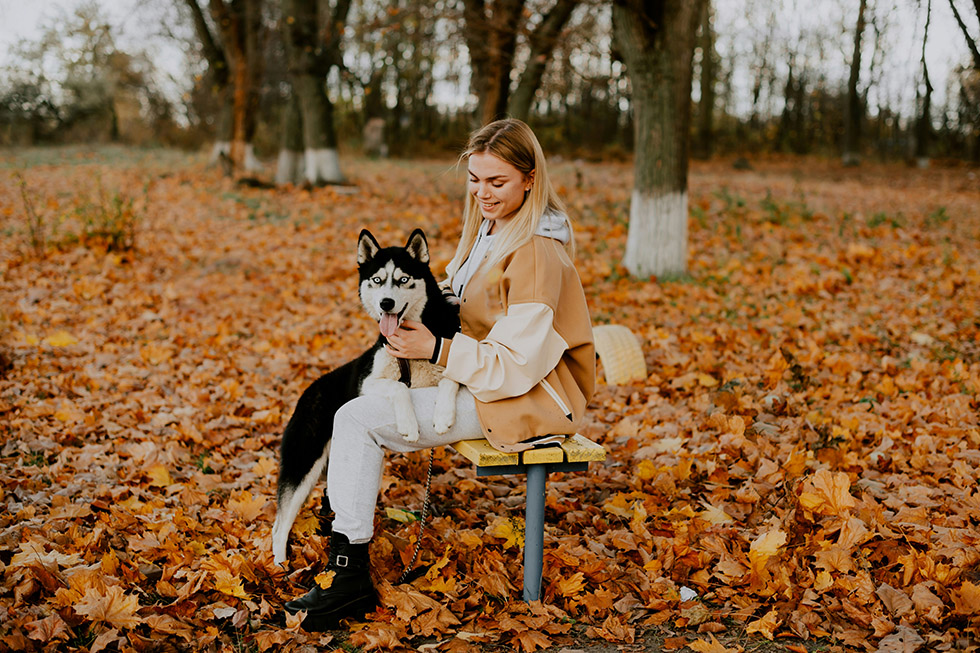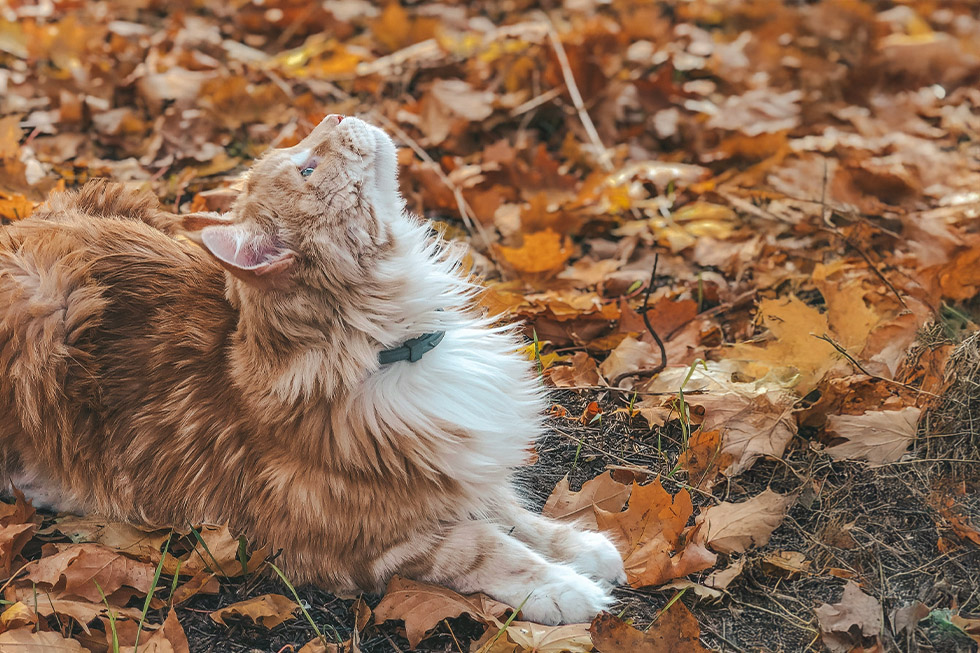
Preparing Your Pet for Autumn: How to Adjust Your Care Routine for Cooler Weather
As the leaves start to fall and the temperature drops, it’s not just humans who feel the change—our pets do too – cue the shivering canine and the tight ball of feline fur in the sunshine. Autumn in Australia brings cooler mornings, shorter daylight hours, and an increase in seasonal illnesses and behavioural changes in pets.
No matter where you live in this beautiful country, our pets will be starting to feel the cold this Autumn. Pet Insurance Australia has created the perfect guide to help you adjust your routine to ensure your dog or cat stays happy, healthy and safe during the transitional season.
Why Autumn Matters for Pet Health in Australia
Autumn may be milder than winter, but it’s still a time of significant change for your pet. The drop in temperature, changes in daylight, and increased humidity (in some areas) can all impact your pet’s:
- Immune system
- Energy levels
- Skin and coat health
- Joint comfort
- Activity patterns
Research has shown that environmental changes, such as temperature and humidity shifts, can influence both canine and feline behaviour and stress responses. Knowing your pet is paramount. If you are concerned about any of your pets behaviour as the chilly weather sets in, consulting your local vet can ensure a pain-free and peaceful winter.
But as a loving pet parent what steps can you do to ensure your pet is happy and healthy during this seasonal change?
1. Adjust Their Sleeping Environment
As temperatures dip, make sure your pet has a warm and dry sleeping area, away from drafts. Dogs and cats that normally sleep outdoors may need to be moved inside, especially older pets or breeds with short coats. If this is not an option consider moving their kennel area into a sheltered zone or somewhere with ample sunshine. Lifting kennels off the floor with pallets or adding extra warmth with blankets can also help keep your pooch warm and comfortable.
Bedding tips:
- Add extra blankets or a self-warming mat
- Keep bedding elevated off cold floors
- Avoid damp areas like laundry floors or uninsulated garages
Older pets, in particular, benefit from orthopaedic beds, which can reduce stiffness and joint pain.
2. Watch for Early Signs of Joint Stiffness
Cold, damp weather can exacerbate arthritis and mobility issues—especially in senior pets or large breeds. Look for signs like hesitation to jump, stiffness in the morning, or slower movement on walks.
If you notice any of these symptoms, talk to your vet about:
- Nutritional joint supplements
- Anti-inflammatory medications
- Regular low-impact exercise like short, frequent walks
Click here for more information on pet arthritis
3. Grooming Adjustments for Autumn
As your pet’s coat thickens for winter, it’s essential to keep up with regular brushing. This removes dead fur, prevents matting, and helps distribute natural oils for skin protection.
Cats, in particular, may need extra help if they shed heavily in autumn. Long-haired breeds are prone to knots and tangles that can become uncomfortable or lead to skin infections.
Avoid overbathing during cooler months, as it can dry out their skin. If you must bathe, choose a gentle, moisturising pet shampoo and ensure your pet is thoroughly dried afterward.
4. Maintain a Healthy Diet and Weight
As activity levels drop in cooler weather, pets may gain weight more easily. Keep an eye on portion sizes, especially for indoor pets. A balanced, species-appropriate diet is essential for supporting your pet’s immune system through seasonal changes.
Ask your vet if your pet might benefit from:
- Seasonal diet adjustments
- Additional fatty acids for skin and coat health
- Age-appropriate supplements

5. Outdoor Hazards: Garden Care & Mushrooms.
In autumn, several outdoor hazards can pose risks to pets in Australia. As homeowners prepare gardens and lawns for cooler weather, the increased use of weed killers, fertilisers, and mulch can be toxic if ingested by curious pets. Products containing glyphosate or iron-based fertilisers are particularly harmful and may cause vomiting, lethargy, or worse. Additionally, mushrooms often thrive in damp autumn conditions and many species can be toxic to dogs and cats if eaten.
Tips:
- Store garden chemicals and fertilizer away from pets.
- Discourage pets exploring in freshly mulched or fertilized gardens
- Remove any toxic mushrooms from your pets environment.
6. Keep Parasite Prevention Going Year-Round
A common misconception is that parasites like fleas, ticks, and worms “go away” in cooler weather. In reality, many parts of Australia stay warm enough for year-round parasite activity, particularly in homes with heating.
Continue regular:
- Flea and tick treatments
- Heartworm prevention
- Worming schedules
7. Mental Enrichment for Rainy Days
Shorter days and rainy weather often mean less outdoor playtime. However it is very important to keep your pet occupied for a healthy mind and body. Combat boredom by offering:
- Puzzle toys
- Training refreshers
- New chew toys or enrichment games
Mental stimulation is key to preventing destructive behaviour and keeping your pet emotionally balanced during the cooler weather. Also invest in good quality dog coats so you can walk your dog no matter what mother nature is doing.
8. Don’t Let the Cold Stop the Walk: Keep Up the Exercise
As the mornings get chillier and the days shorter, it’s easy to skip those daily dog walks—but autumn is no time to slack off on exercise.
Regular physical activity is vital for both dogs and humans. It helps:
- Maintain a healthy weight
- Support cardiovascular and joint health
- Prevent behavioural problems caused by boredom
- Strengthen the human–animal bond
A recent study published in Frontiers in Public Health found that dog ownership significantly increased the likelihood of meeting recommended physical activity guidelines, largely through regular walking routines.
The same study also found that:
- Dog owners walk more often and for longer periods than non-dog owners
- Walking improves both physical and mental health outcomes in humans and pets
- Dogs who are walked regularly tend to be less anxious and more socially adjusted
How to keep it going in cooler months:
- Invest in a warm, waterproof jacket for your dog (and yourself)
- Choose shorter, more frequent walks if it’s cold or wet
- Try early afternoon walks when the sun is out and it’s warmer
- Mix in mental stimulation games at home when outdoor time is limited
Don’t let a drop in temperature lead to a drop in activity. Keeping up regular movement not only supports your pet’s physical wellbeing, but also helps reduce seasonal restlessness and builds healthy habits for both of you.
Autumn is the Perfect Time for a Vet Check-Up
Seasonal check-ups are a great opportunity to spot emerging issues and prep for the colder months ahead. Your vet can check your pet’s weight, joints, skin condition, dental health, and more.
Looking After Your Pet This Autumn?
By making a few simple adjustments, you can help your dog or cat thrive during the change of season. Autumn is a beautiful time to enjoy walks, snuggles, and the slower pace of the cooler months—with a little planning, it can be just as comfortable for your pets as it is for you.
Nadia Crighton is a renowned and accomplished professional in the fields of Journalism, Public Relations, and Writing, with an extensive career spanning over 25 years, 20 of which have been dedicated to promoting the health and well-being of pets.
Get the latest Pet Insider Tips & News
We offer award-winning* pet insurance policies to protect your furry friend’s health and wellbeing. Get a quote today and give your pets the care they deserve.
Archives
Categories
- Cat Care (64)
- Cats (1)
- Dog Care (124)
- Guides (28)
- Health and Nutrition (200)
- Lifestyle and Activities (219)
- Media Release (24)
- Pet Care (246)
- Rescue Dogs (1)


